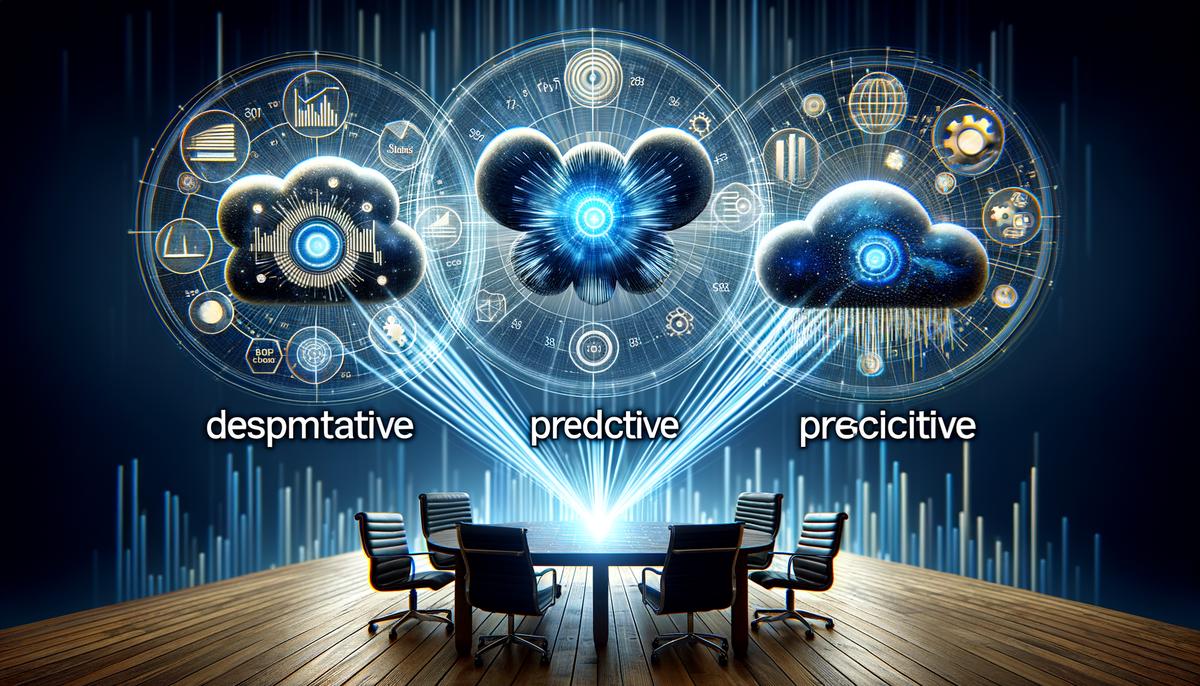
Data Integration in Recruitment
In the process of recruitment, data integration plays a key role in bringing together information from various sources to provide a comprehensive view. This approach goes beyond technical considerations to represent a strategic method for leveraging available data. It aims to enhance the recruitment process, making it more efficient and effective. In this discussion, we will explore how integrating data can transform talent acquisition, benefiting both recruiters and candidates.
Defining Data Integration
Data integration in recruitment involves systematically combining data from different sources within the hiring cycle. It consolidates diverse datasets, such as applicant tracking systems (ATS), social media profiles, job boards, and internal databases, into a single platform. This unification allows recruiters to access a wealth of information from which meaningful insights and decisions can be derived.
Data integration serves as a valuable tool for navigating the complexities of hiring more efficiently. By combining data from multiple sources, it breaks down silos that can hinder information flow. For example, candidate information stored in an ATS can be synchronized with performance data in post-hire assessments, providing a comprehensive view of the recruitment lifecycle.
These comprehensive insights are crucial for refining hiring strategies. By tracing the journey of a hire from initial advertisement engagement to eventual employment, organizations can identify effective recruitment channels and areas needing improvement, informing future strategies.
Integrated data also enhances the candidate experience, which is critical in the competitive landscape of talent acquisition. By centralizing data, recruiters can ensure a more personalized and efficient engagement process, improving candidate satisfaction. Tailoring interactions based on insights from integrated data can transform a standard recruitment process into an engaging candidate journey, attracting top talent to the organization.
Data integration also supports diversity and inclusion efforts in recruitment. By aggregating and analyzing metrics related to demographic diversity, organizations can identify biases or barriers within their hiring processes. With this knowledge, changes can be implemented to promote a more inclusive recruitment strategy, ultimately diversifying the workforce.
Embracing data integration enables organizations to move towards predictive analytics in recruitment. This proactive approach allows hiring teams to anticipate recruitment needs and potential challenges before they arise. For instance, data revealing seasonal fluctuations in hiring needs could prompt a preemptive strengthening of the recruitment pipeline, mitigating risks associated with talent scarcity.
By breaking down data silos and fostering a unified data ecosystem, data integration empowers recruiters with the intelligence needed to streamline operations, enhance candidate experiences, and enable more informed, strategic decision-making in the recruitment process.

Benefits of Data Integration
- Elevating Candidate Quality: Data integration analyzes historical success patterns, comparing candidate profiles with those who have flourished in similar positions. This improves the accuracy of matching candidates to roles and elevates the overall quality of hires. For example, if data reveals that successful software developers within a company often possess a blend of specific coding skills and collaborative work history, recruiters can tailor their search and evaluation criteria accordingly.
- Accelerating the Hiring Velocity: Data integration helps significantly reduce the time it takes to bring new hires on board. By offering a comprehensive view of the recruitment funnel in real-time, organizations can quickly identify and eliminate bottlenecks. Suppose a data analysis indicates that the technical assessment stage accounts for an undue delay in the process. In response, the company could streamline these assessments or implement pre-screening tests to ensure only highly qualified candidates reach this stage, speeding up the overall hiring cycle.
- Amplifying Cost Efficiency: Through integrated recruitment data, companies can identify which sourcing channels bring in the best candidates most cost-effectively. Imagine discovering that employee referrals outperform costly job fairs in terms of bringing in quality hires. This insight enables organizations to reallocate funds efficiently, investing more in profitable channels and reducing expenses on less effective ones.
- Supercharging Performance Management: By linking recruitment data with ongoing performance analytics, organizations can identify which hiring sources contribute the most productive employees or which interview techniques precede successful hires. This creates a feedback loop where recruitment strategies are continually refined based on post-hire performance.
Data integration is a powerful tool that transforms recruitment into a strategic, data-driven operation. It enables tailored candidate experiences, optimized hiring processes, cost efficiency, and continuous improvement of recruitment strategies.

Implementing Data Integration
- The Prelude: Identifying Key Metrics
For data integration, this means identifying the key metrics that align with your recruitment goals. These metrics can range from the number of applicants per opening and sources yielding the highest quality candidates, to more nuanced ones like candidate engagement rates post-interview.
- A Crescendo of Data Collection
Next, preparing for data integration involves gathering your data from various sources. This stage requires coordinating data from your ATS, external job boards, social media insights, and internal HR systems. The key is ensuring all systems can effectively communicate and share data.
- Harmony in Analysis
With all data in hand, it’s time for analysis. This is where the myriad of recruitment data you’ve meticulously gathered is examined, looking for patterns and trends. Using tools that range from simple spreadsheets to sophisticated AI-driven analytics platforms, you aim to uncover insights that can guide your recruitment strategy.
- Finale: Acting on Insights
Acting on the insights gleaned from data analysis is crucial. This could mean fine-tuning your recruitment advertisement placements based on top-performing channels or reshaping interview processes to further improve candidate experiences.
Implementing data integration does come with its share of challenges—data quality being key among them. Ensuring you’re working with clean, accurate data is vital. Equally important are privacy concerns; safeguarding candidate data is not just ethical but regulatory. Overcoming these challenges requires a blend of technological finesse—such as advanced data cleansing tools and stringent data security measures—and a culture of continuous improvement.
As data flows and markets change, so too should your approach to data integration in recruitment. It’s an ongoing quest for improvement, adapting to new insights and technologies.

Types of HR Analytics
In the realm of HR analytics in recruitment, three key players stand out: Descriptive, Predictive, and Prescriptive Analytics. Each plays a critical role in transforming data into actionable insights, ensuring that the recruitment process is not just a series of discrete events but a cohesive strategy that drives efficacy and foresight.
- Descriptive Analytics: The Historian
In the realm of recruitment, Descriptive Analytics delves into historical data to reveal what has happened over time. By analyzing application rates, interview feedback, and hiring successes or failures, Descriptive Analytics provides a detailed account of recruitment efforts. It lays the groundwork, offering a clear lens through which to view past recruitment endeavors.
- Predictive Analytics: The Oracle
With the past documented, Predictive Analytics comes into play. This approach uses a combination of statistical models and machine learning to forecast what might occur. In recruitment, Predictive Analytics analyzes patterns in the data, from candidate success rates to turnover trends, to predict outcomes such as candidate fit or job vacancy longevity. Armed with this foresight, recruiters can anticipate challenges and opportunities, adjusting their strategy accordingly.
- Prescriptive Analytics: The Maestro
The final piece of the puzzle is Prescriptive Analytics. Not content with merely recounting the past or predicting the future, this approach actively shapes it. By applying advanced algorithms and simulations, Prescriptive Analytics suggests actions to address anticipated challenges head-on or to seize upcoming opportunities. Within recruitment, this might mean identifying the most effective recruitment channels before launching a campaign or honing in on ideal candidate qualities that predict success within the organization. Prescriptive Analytics doesn’t just predict the future; it guides it, steering each recruitment decision towards the most favorable outcome.
As these three key players take their positions in HR analytics, their collective impact on recruitment data integration is profound. No longer are data points merely a collection of disparate pieces of information. Instead, they become part of a coordinated strategy that informs and evolves recruitment approaches.
Descriptive Analytics lays the historical foundation, informing us of our baseline from which to improve. Predictive Analytics offers a glimpse into the potential future, allowing us to prepare and adjust. Finally, Prescriptive Analytics takes the lead, directing actions that aim for the best possible outcomes in recruitment.
While each form of HR analytics is valuable individually, their true power is realized when integrated into recruitment strategies. Just as no single element can drive a successful recruitment process, Descriptive, Predictive, and Prescriptive Analytics must work together to turn the myriad data points into a well-executed hire.

Beyond the Final Note: A Vision of Tomorrow
As we progress towards the conclusion of our exploration of data-driven recruitment, we look towards the future possibilities. The evolution of data integration and analytics in recruitment is a significant development that enhances the hiring process.
1. AI: The Virtuoso Prodigy
AI in the landscape of data-driven recruitment is making significant advancements. It automates tasks from screening resumes to scheduling interviews, all while learning and evolving. AI is becoming an important tool in the recruitment process, helping to streamline data and improve efficiency.
2. Machine Learning: The Composer’s Muse
Machine Learning thrives on pattern recognition, feeding on vast volumes of data to distill insights that were previously indiscernible. In recruitment, this translates to an ability to match candidates to roles, recognizing nuances in skill sets and cultural fit. Machine Learning is an evolving algorithm that adapts to the unique needs of each organization, transforming data into successful placements.
3. The Curtain Raises on a Data-Integrated Future
As we look to the future, we foresee an environment enriched by AI and Machine Learning, where data is utilized with precision to improve the recruitment process. Data flows seamlessly, from marketing insights guiding employer branding efforts to performance analytics informing future hires. Holistic data-driven strategies become the norm.
This future offers opportunities for candidates, where bias is mitigated, opportunities are equitably dispersed, and personal career goals can be achieved. Data integration and analytics become essential tools in meritocratic recruitment.
4. Ode to the Pioneers of Tomorrow
To pioneers in this journey towards a data-empowered recruitment era, the path is both exciting and challenging. Implementing AI and Machine Learning requires patience, innovation, and commitment.
Remember that this future, though defined by technologies, should never lose sight of its core focus – human potential. It’s about elevating every participant in the recruitment process to their highest potential.
As we conclude our exploration of the future of data-driven recruitment, we stand on the cusp of a transformative age. An age where strategic decisions are informed by data, where every recruitment act is enhanced by AI and Machine Learning – a true example of efficiency and intuition working together.1


Share
Facebook
X
LinkedIn
Telegram
Tumblr
WhatsApp
VK
Mail